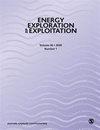用于智能建筑能源负荷精确预测的先进混合深度学习模型
IF 1.6
4区 工程技术
Q4 ENERGY & FUELS
引用次数: 0
摘要
在智慧城市中,可持续发展取决于能源负荷预测,因为它能指导公用事业部门有效地规划、分配和生产能源。本研究提出了一种新型混合深度学习模型,包括改进型卷积神经网络(CNN)、双向长短期记忆(Bi-LSTM)、图神经网络(GNN)、变压器和融合层架构,用于精确预测能源负荷。改进型神经网络的扩张卷积和宽感受野的残差块容纳功能带来了更好的特征提取结果,减少了梯度消失问题。通过捕捉双向的时间联系,Bi-LSTM 网络有助于更好地把握复杂的能源使用模式。图神经网络通过描述智能城市中能源消耗单元之间的空间关系,提高了跨链接系统的预测能力。变压器模型强调关键趋势以保证预测的可靠性,使用注意力方法来管理能源消耗数据中的长期依赖关系。在融合层中结合了 CNN、Bi-LSTM、Transformer 和 GNN 组件预测,综合了众多数据表示以提高准确性。在 "电力消耗 "Kaggle 数据集上,混合模型的均方根误差为 5.7532 Wh,平均绝对百分比误差为 3.5001%,平均绝对误差为 6.7532 Wh,R2 为 0.9701,表现优于其他模型。这项工作开发了一个现实的模型,有助于做出明智的决策,提高能源效率技术,促进智慧城市的能源负荷预测。本文章由计算机程序翻译,如有差异,请以英文原文为准。
An advanced hybrid deep learning model for accurate energy load prediction in smart building
In smart cities, sustainable development depends on energy load prediction since it directs utilities in effectively planning, distributing and generating energy. This work presents a novel hybrid deep learning model including components of the Improved-convolutional neural network (CNN), bidirectional long short-term memory (Bi-LSTM), Graph neural network (GNN), Transformer and Fusion Layer architectures for precise energy load forecasting. Better feature extraction results from the Improved-CNN's dilated convolution and residual block accommodation of wide receptive fields reduced the vanishing gradient problem. By capturing temporal links in both directions, Bi-LSTM networks help to better grasp complicated energy use patterns. Graph neural networks improve predictive capacities across linked systems by characterizing the spatial relationships between energy-consuming units in smart cities. Emphasizing critical trends to guarantee reliable forecasts, transformer models use attention methods to manage long-term dependencies in energy consumption data. Combining CNN, Bi-LSTM, Transformer and GNN component predictions in a Fusion Layer synthesizes numerous data representations to increase accuracy. With Root Mean Square Error of 5.7532 Wh, Mean Absolute Percentage Error of 3.5001%, Mean Absolute Error of 6.7532 Wh and R2 of 0.9701, the hybrid model fared better than other models on the ‘Electric Power Consumption’ Kaggle dataset. This work develops a realistic model that helps informed decision-making and enhances energy efficiency techniques, promoting energy load forecasting in smart cities.
求助全文
通过发布文献求助,成功后即可免费获取论文全文。
去求助
来源期刊

Energy Exploration & Exploitation
工程技术-能源与燃料
CiteScore
5.40
自引率
3.70%
发文量
78
审稿时长
3.9 months
期刊介绍:
Energy Exploration & Exploitation is a peer-reviewed, open access journal that provides up-to-date, informative reviews and original articles on important issues in the exploration, exploitation, use and economics of the world’s energy resources.
 求助内容:
求助内容: 应助结果提醒方式:
应助结果提醒方式:


